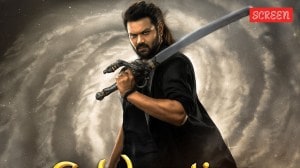Those days of our lives
It seems hard to recall now that for close to half a decade following Independence we lived with the odd assumption that we were better off ...

It seems hard to recall now that for close to half a decade following Independence we lived with the odd assumption that we were better off being protected from the truth about many things. That the government decided what we could or could not see and hear on television and radio. That the press, though free and robustly so in many ways, would still couch news of rioting in ambiguities such as ‘‘clashes between two (unnamed) communities’’. That the Censors would snip off anything even remotely controversial. And that even as late as the early nineties, at the time of Rajiv Gandhi’s assassination, many publications were debating the use of candid pictures of the blast both because of their disturbing nature and the implications for the dignity and privacy of the individuals involved, in particular, a former prime minister.
All this seems so hard to believe in today’s changed environment. When the press, far from shirking from mentioning communities, vies to get the most details into print. When television’s bare-all and first-with-it approach makes the media’s earlier reservations seem ninnyish and old-fashioned. And outrageous cinema seems all the vogue. And yet one does not appreciate just how much has changed until one watches something like Black Friday. The much awaited film on the 1993 Mumbai blasts was screened for a full house at the city’s annual MAMI Film Festival last week prior to a public release.
The film, made by Anurag Kashyap, who scripted the provocative Satya, is based on an eponymous book by local journalist S. Hussain Zaidi. It is an enacted documentary that details the conspiracy behind the blasts. The basic facts are known: the day of mayhem when terrorism made a spectacular entry into Mumbai. The riots that preceded it creating the motivation. The involvement of the underworld and the ISI. In fact the film does not tell us anything radically new. What it does do however is to bring the whole story to life. We see the blasts then not merely as a ‘‘terrorist act’’ but as an act committed by real people. We see the key figure, Tiger Memon, not as a mysterious, terrifying figure but as a middle level smuggler furious over the destruction of his property during the riots. We see him collecting disaffected youths and plotting with Dawood Ibrahim who has his own troubles with the ISI. We see corrupt officials abetting the landing of RDX. We hear abuse of politicians and we also see the police in an unusually sympathetic light. We see gory visual evidence of the blast aftermath and we also see the casualness with which the bombs were assembled by men with no thought of the consequences either for others or for themselves.
Should such films be made? What purpose do they serve, particularly given our earlier preference for varnished truth?
Well for one, what a film like Black Friday, by its very choice of subject, does is allow us to look back in the light of subsequent events. Take the concept of larger Islam for instance. An Islam that transcended borders was a strong theme during the riots that preceded the blasts in Mumbai in early 1993. Stories of mysterious boat landings with arms consignments from the Gulf led ordinary middle class Hindus to arm themselves with hockey sticks and laathis and keep vigil through the nights. Strangely when the blasts did occur and in a manner that proved every stereotype — from underworld involvement to religious zeal to the foreign hand — the impact was completely different. Far from sparking off a conflagration of fear and retribution, the blasts actually brought an abrupt end to the long turbulent weeks that the city had lived through. It was as if the recalcitrant city had received a knock on the head. And if anything it emerged with all its resilience and community spirit to tend to the injured and, above all, to return to work.
On the other hand, the minority community, as a character says in Black Friday, believed in the possibility that Muslims would be wiped out in India. Urging for the blasts, Memon in the film further claimed that Mumbai being the country’s financial backbone would, if attacked, cripple the country. As we know neither possibility came true. With hindsight one can claim that the fears and expectations of the time may have been exaggerated. But it is also possible to see that in that moment of heightened emotion how easy it is to maim, to kill and to destroy. And how irrevocable and tragic are the effects of such madness. These are truths we need to remember.


- 01
- 02
- 03
- 04
- 05





























